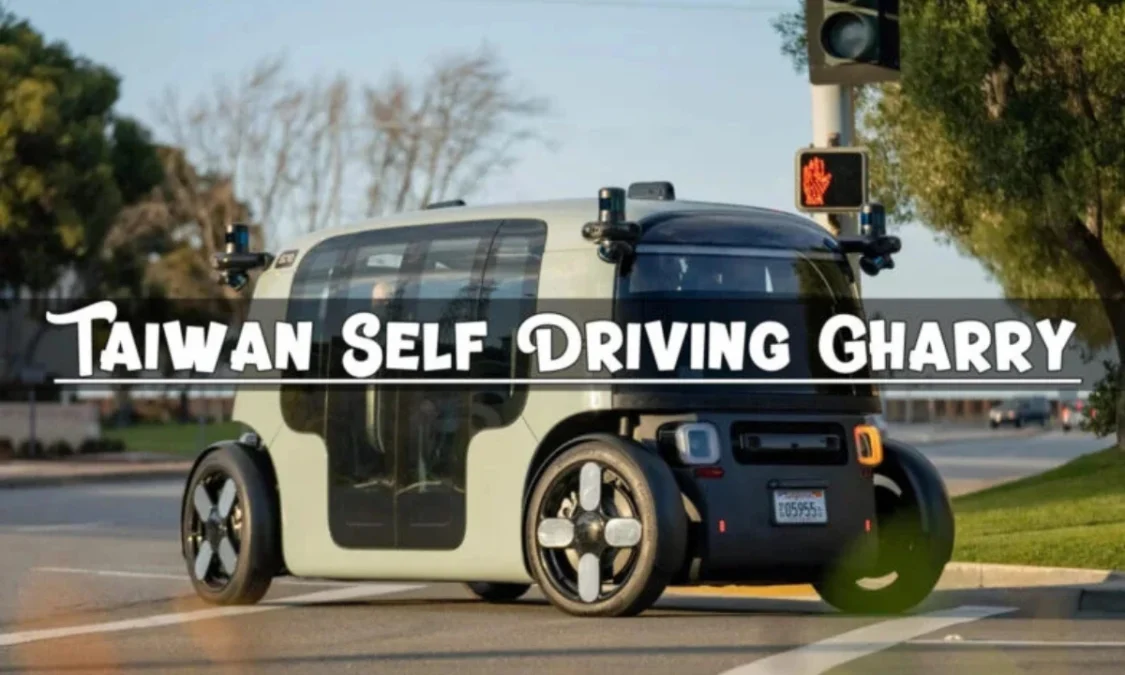The global transportation industry has revolutionized over the last decade, with a growing emphasis on automation and sustainable mobility. Among the numerous innovations emerging worldwide, one unique and fascinating concept stands out: the Taiwan self-driving gharry. Combining advanced autonomous technology with cultural charm, this futuristic transportation mode redefines how locals and tourists explore Taiwan. In this article, we will explore what makes the Taiwan self-driving gharry an innovative marvel, as well as its cultural significance, technical features, and implications for the future of autonomous travel.
What is a Taiwan Self-Driving Gharry?
The term “gharry” traditionally refers to a horse-drawn carriage historically used for transportation in various parts of Asia, including India and Southeast Asia. In Taiwan, however, the term has been modernized to describe a vehicle that combines the aesthetics of a traditional carriage with cutting-edge self-driving technology. The Taiwan self-driving gharry is an autonomous electric vehicle (EV) that offers a seamless blend of tradition, sustainability, and convenience.
These self-driving vehicles are equipped with advanced sensors, cameras, and artificial intelligence to navigate urban and rural areas without needing a human driver. Designed to resemble the charm of an old-fashioned gharry, they aim to provide a nostalgic yet futuristic transportation experience.
The Cultural Significance of the Taiwan Self-Driving Gharr
Taiwan’s tourism and transportation sectors have long been known for their creativity and ability to preserve cultural identity while embracing modernization. The self-driving Gharry is a testament to this unique approach, encapsulating the nation’s dedication to merging heritage with innovation.
By adopting the iconic design of the traditional Gharry, these autonomous vehicles celebrate Taiwan’s cultural history and offer visitors an authentic connection to its rich traditions. Tourists are transported from one destination to another and immersed in a unique experience that reflects Taiwan’s identity.
The self-driving Gharry has become especially popular in scenic areas such as Tainan, Sun Moon Lake, and Jiufen. It provides a leisurely and eco-friendly way to enjoy the beauty of TTaiwan’s natural landscapes and historical landmarks.

Cutting-Edge Technology Behind the Taiwan Self-Driving Gharry
The success of the Taiwan self-driving gharry lies in its incorporation of state-of-the-art technology, making it one of the most advanced autonomous vehicles in the world. Below are some of the key technological features that make this innovation possible:
1. Autonomous Navigation Systems
The Gary is powered by a sophisticated AI-driven navigation system that uses GPS, LIDAR (Light Detection and Ranging), and real-time mapping to determine its route. These technologies work together to ensure the vehicle can navigate complex road networks, overcome obstacles, and seamlessly adjust to traffic conditions.
2. Advanced Sensors and Cameras
The Taiwanese self-driving gear has multiple sensors and cameras that detect pedestrians, cyclists, and other vehicles. This ensures the highest level of safety for passengers and pedestrians alike, even in crowded urban settings.
3. Electric PowertGharry
The Gharry is fullyGharryric, making it an environmentally friendly transportation option. Its battery-powered design reduces carbon emissions, aligning with Taiwan’s broader efforts to combat climate change and promote green energy solutions.
4. Passenger-Centric Features
In addition to its self-driving capability,y is designed with passenger comfort in mind. Spacious interiors, air conditioning, and entertainment systems are just a few features that enhance the overall riding experience.
How the Taiwan Self-Driving Gharry is Transforming Tourism
Tourism is one of the key industries benefiting from the Taiwan self-driving gharry. These autonomous vehicles have opened up new possibilities for exploring Taiwan’s diverse attractions, catering to domestic and international travelers.
1. Enhanced Accessibility
The self-Gharryngg self-Gharrynggade makes it easier for people to visit remote or lesser-known attractions without relying on traditional modes of transportation. These vehicles are particularly valuable in rural areas, where public transportation options are limited.
2. Eco-Friendly Travel
As travelers become more conscious of their environmental footprint, Gharryhe Gharry offers a sustainable way to explore Taiwan. Its electric engine reduces air pollution, making it an attractive choice for eco-conscious tourists.
3. Personalized Experiences
Many self-driving gharry services offer customizable itineraries, allowing passengers to choose the routes and stops that best match their interests. This level of personalization is a game-changer for tourism, ensuring every traveler has a unique and memorable experience.
Challenges and Opportunities for the Taiwan Self-Driving Gharry
While the Taiwan self-driving gharry is a groundbreaking innovation, it has challenges. However, these obstacles also present opportunities for further development and improvement.
1. Regulatory Hurdles
One of the primary challenges facing autonomous vehicles worldwide is the lack of comprehensive regulatory frameworks. In Taiwan, policymakers are working to create guidelines that ensure the safety and efficiency of self-driving technologies while promoting their widespread adoption.
2. Public Acceptance
As with any new technology, public trust is crucial for the success of the Taiwan self-driving gharry. Ensuring that passengers feel safe and confident in the vehicle’s capabilities is a top priority for developers and operators.
3. Integration with Existing Infrastructure
To fully realize the potential of self-driving technologies, it is essential to integrate them with Taiwan’s existing transportation infrastructure. This includes creating designated lanes, charging stations, and intelligent traffic management systems.
The Future of the Taiwan Self-Driving Gharry
The Taiwan self-driving gharry is more than just a mode of transportation; it represents a vision for the future of mobility. By combining tradition with technology, Taiwan has set an example for countries to preserve their cultural identity while embracing innovation.
As the technology behind self-driving vehicles continues to advance, we can expect to see even more sophisticated versions of the self-driving Gharry in the cGharryyears. These vehicles may eventually feature fully autonomous capabilities, enhanced AI, and greater energy efficiency.
Moreover, these Gharryngs inspire others to develop transportation solutions that reflect their cultural heritage, fostering a new era of innovation in the global travel industry.

Conclusion
The Taiwan self-driving gharry is a remarkable innovation that exemplifies the perfect harmony between tradition and technology. Offering an eco-friendly, autonomous, and culturally immersive transportation option has symbolized Taiwan’s forward-thinking approach to mobility.
While there are challenges to overcome, self-driving cars have already affected Ghana’s tourism, transportation, and sustainable travel. As this technology continues to evolve, it holds the potential to shape the future of autonomous vehicles not just in Taiwan but worldwide. Whether you’re a tech enthusiast or a traveler seeking a unique experience, the Taiwan self-driving gharry is worth taking.



